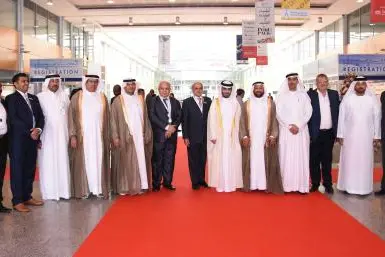PHOTO
Abu Dhabi: Prolonged economic headwinds have meant that Abu Dhabi’s real estate market has continued to stagnate during 2017, with the majority of sale and lease activity driven by affordability and incentives being offered by landlords and developers, according to leading international real estate consultants, Cluttons.
Faisal Durrani, Head of Research at Cluttons said: “The nervousness we have been reporting on for almost three years is well entrenched in the market at present. Weaker economic growth has taken a toll on the hydrocarbon sector in particular, which has been a key driver of demand in the residential and commercial markets in the emirate historically.
“Saying that, we are seeing some positives emerge that may help to boost economic growth, including the recent announcement by ADNOC to invest $109 billion in its gas downstream growth strategy over the next 5 years. This will likely filter through to the UAE capital’s real estate market in the form of fresh demand for residential and commercial property. However, in the short term we anticipate that both tenants and buyers will continue to err on the side of caution and activity will continue to be driven by affordability and favourable payment terms offered by landlords and developers.”
Residential Market
Cluttons Winter 2017/18 Abu Dhabi Property Market Outlook report indicates that the rental market has been relatively more buoyant than the sales market, with higher levels of activity compared to this time last year. A lot of demand stems from households relocating to make savings and to take advantage of incentives being offered by landlords. These include the accepting of rental payments through multiple cheques, as well as a growing number of landlords who are willing to pay agency fees, which is often up to 5% of the annual agreed rent.
Edward Carnegy, Head of Cluttons Abu Dhabi said, “With household finances under pressure due to a reduction in housing allowances, the removal of various subsidies and the impending introduction of VAT in January 2018, tenants are focused on value for money, as well as quality”.
For now, Cluttons says, the rate of decline in rents across the city’s residential investment areas slowed to -1.8% in Q3, from -3.6% in Q2. The annual rate of change has however slipped further to -11.8%.
In the sales market, Cluttons’ report indicates that residential capital values across Abu Dhabi’s freehold investment areas declined by 0.4% in the three months to the end of September, leaving them just shy of AED 1,150 psf, a level not seen since early 2014. Overall, house prices are now 4.1% below where they were at the same time last year.
Carnegy added, “Due to the sustained drop in demand, we have seen developers respond by offering attractive payment plans, as well as bringing residential developments through that are far more affordable than what we have seen previously. Water’s Edge by Aldar, for instance, has been a runaway success, with the Yas Island scheme netting the developer some AED 800 million through off plan sales of all units.”
Cluttons previously forecasted rents to end 2017 8% to 10% down on 2016 across Abu Dhabi’s freehold residential investment areas.
”Given the range of complex factors hindering the market’s ability to turn around, rents are now expected to end the year 10% to 12% lower than the end of 2016. 2018 is likely to see rents slipping further in the region of 5% to 7%, unless there is a notable rebounding in economic growth, which would have to be underpinned by a turnaround in oil prices, which appears unlikely at this stage”, explained Durrani.
Office Market
Similar to the residential market, subdued growth in the oil and gas sector continues to undermine overall activity in the office market. The public sector on the other hand, which includes government departments and other quasi government entities, appears to be mobilising in response to the weak rents, with a range of requirements in the market. While some are looking to consolidate, others are attempting to upgrade from older offices.
Carnegy said: “We are seeing fairly significant churn from public sector and related entities, with at least 50,000 sqm requirements currently in the market. This is attributable to various drivers including consolidation exercises, upgrading offices from older legacy locations and the availability of new office supply to enable such relocations. These factors are all framed by a requirement to cut cost and drive efficiency. Similarly, corporate occupiers are still consolidating, cost cutting and requiring increased lease flexibility.
“With increasing vacancy across the market, the majority of Landlords are seeking to retain existing tenants where possible, typically agreeing improved terms at renewal. New tenants are being offered a range of increased incentives to win them into buildings, such as rent-free periods and payment terms. We’ve also seen a small number of landlords fitting out premises for tenants, removing a substantial barrier for relocation.”
Cluttons’ report also highlights the reduction of headline rents across the city. Even the top-tier Grade A buildings have seen rents weaken, with the Aldar HQ building (-2.8%) and International Tower (-3%), for instance, both registering falls in headline rents in Q3. Still, over the last five years, prime office rents have declined by just 5.4% to AED 1,750 psm, shielded by the relatively small number of Grade A office buildings. Secondary rents have fallen by a sharper 39.3% over the same period, to AED 850 psm.
Overall, Cluttons’ expectation is for office rents to remain under pressure across Abu Dhabi during 2017 and 2018.
Durrani concluded: “Prime office rents appear to be on track to end the year roughly 5% to 10% down on this time last year and it is our view that a similar pattern is likely during 2018. The key to unlocking the current stalemate will be a turn-around in oil price growth and perhaps an easing of the cost containment measures introduced by the Government in the wake of the oil price collapse in 2014. Both of course are unlikely at this stage and so our expectation is for ‘more of the same’, with occupiers likely to continue capitalising on weak rents by relocating and consolidating operations where possible.”
-Ends-
© Press Release 2017










